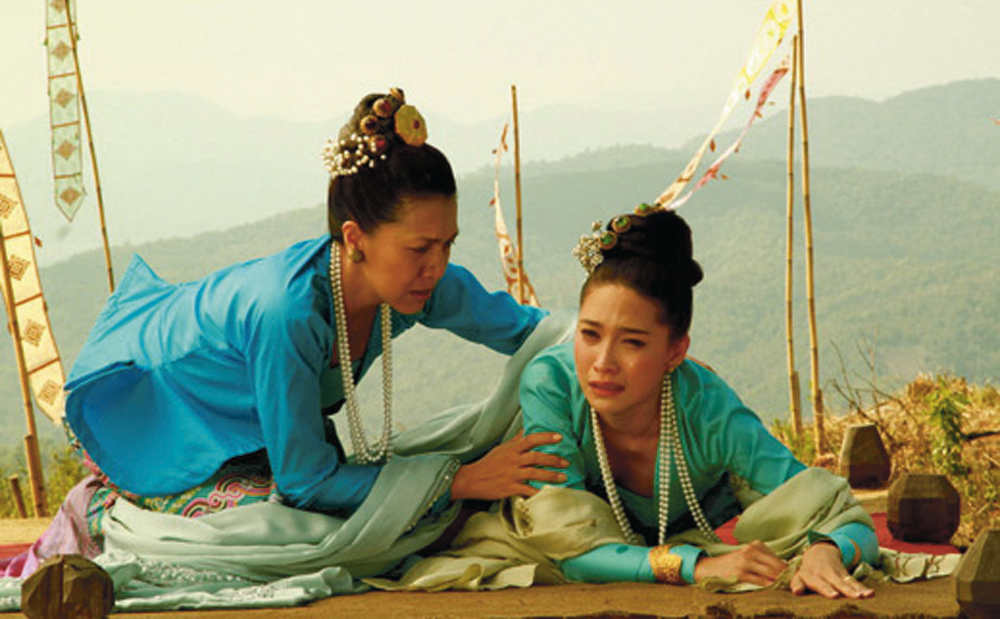Based on an old screenplay by MR Kukrit Pramoj, M.L. Pandevanop “Mom Noi” Devakul remakes Rashomon, the classic period piece by Japanese director Akira Kurosawa. Like the 1950 original, it questions reality and perception through a murder trial where the accused, the alleged accomplice and the spirit of the deceased present conflicting accounts. Mom Noi sets his version in Lanna-era northern Thailand and prefaces the story with a dedication to the teachings of the Lord Buddha. The new Buddhist reinterpretation, however, relies largely on the initial dedication (and a soundtrack of moralizing Pali songs) rather than any major changes in the story and the telling. What follows, then, is merely a beautiful, well-acted, scene-by-scene remake.
A disillusioned young monk (a doe-eyed Mario Mauer) is leaving the monkhood, but gets caught in a storm with a wood cutter (Mum Jokmok). While they wait in a cave, they discuss a murder trial from the day before. Forest bandit Singkham (a dirty-sexy Dom Hetrakul) is on trial for the murder of a nobleman (an emasculated Ananda Everingham) and the rape of his wife (a gorgeous Ploy Cherman). Three different accounts of the murder are depicted through flashbacks, each of which presents the teller in a flattering (if not exonerating) light. The day after the trial, however, we hear a fourth version of the story from the wood cutter that casts everything into doubt.
Taking a complex, post-WWII, post-modern cinematic monolith like Rashomon and then superimposing an exclusively Buddhist interpretation on it is disastrously reductive. Discerning viewers might enjoy inferring parallels between the story and the current political milieu, but even that’s a stretch. Viewed a certain way, this dumbing down of the film into a tool of the hegemon is pedantic and condescending.
Still, it’s hard to find fault with the film as a piece of entertainment. The camera work is lovely, the costumes are convincing and the actors do a marvelous job adjusting the nuances of their portrayals to fit each retelling. The film avoids over-the-top-ness, with the exception of comically bad CGI butterflies in one scene and Mauer’s awkward fake scalp. Considering that it is comprised of the same story told four times, the film is a fun watch. Cinephiles, post-modernists and feminists should take it with a grain of salt, though.










